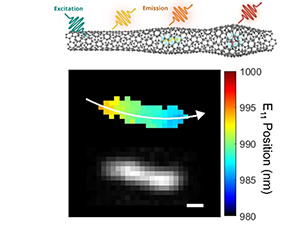Selective filling of n-hexane in a tight nanopore
 Nature Communications 2021, 12, 310
Nature Communications 2021, 12, 310
Haoran Qu, Archith Rayabharam, Xiaojian Wu, Peng Wang, Yunfeng Li, Jeffrey Fagan, Narayana R. Aluru & YuHuang Wang
The abstract reads as follows: Molecular sieving may occur when two molecules compete for a nanopore. In nearly all known examples, the nanopore is larger than the molecule that selectively enters the pore. Here, we experimentally demonstrate the ability of single-wall carbon nanotubes with a van der Waals pore size of 0.42 nm to separate n-hexane from cyclohexane—despite the fact that both molecules have kinetic diameters larger than the rigid nanopore. This unexpected finding challenges our current understanding of nanopore selectivity and how molecules may enter a tight channel. Ab initio molecular dynamics simulations reveal that n-hexane molecules stretch by nearly 11.2% inside the nanotube pore. Although at a relatively low probability (28.5% overall), the stretched state of n-hexane does exist in the bulk solution, allowing the molecule to enter the tight pore even at room temperature. These insights open up opportunities to engineer nanopore selectivity based on the molecular degrees of freedom.
This work was supported as part of the Center for Enhanced Nanofluidic Transport, an Energy Frontier Research Center funded by the U.S. Department of Energy, Office of Science, Basic Energy Sciences under Award # DE-SC0019112.
